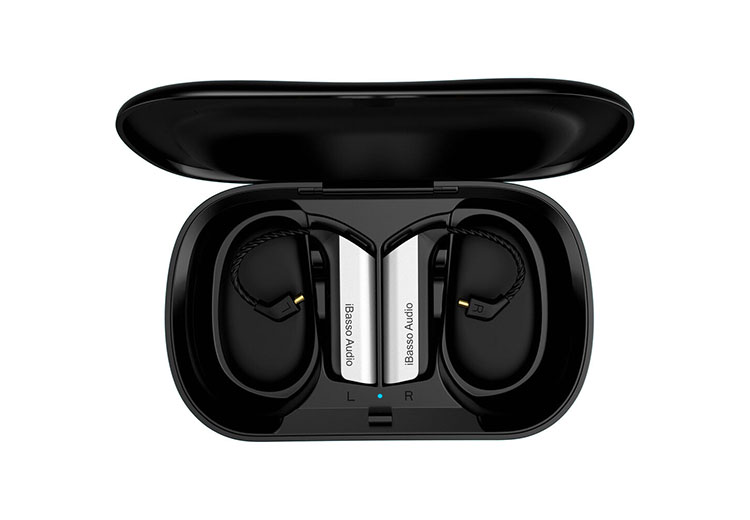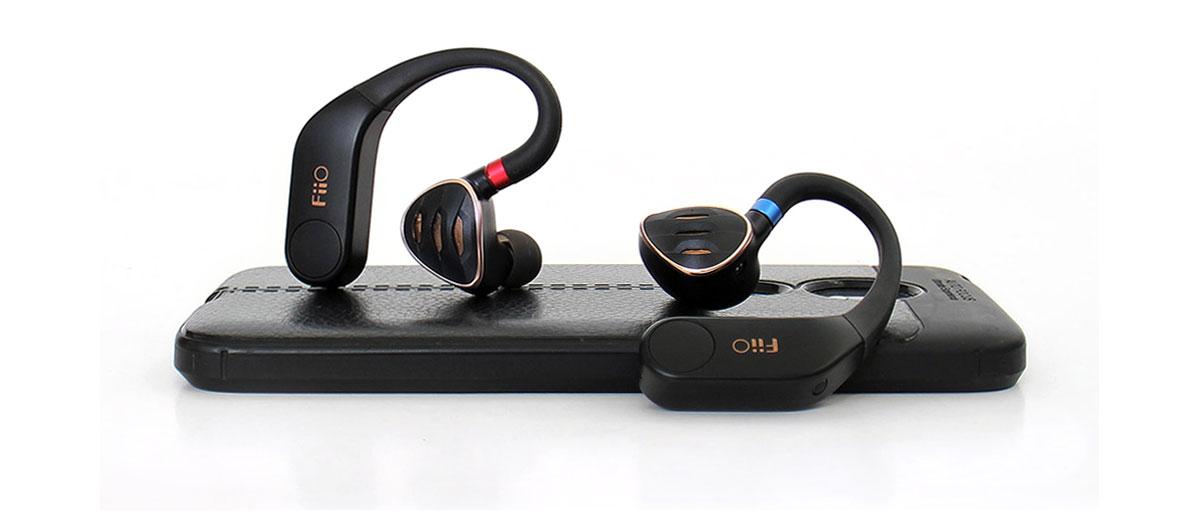Sound Impressions
Summary
The FiiO UTWS5 seems to have a good amount of instrument definition and a better uncoupling of elements compared to the last model. The new hardware seems to be more resolute and cleaner sounding.
The frequency response has decent extension bilaterally and there seems to be a good frequency balance with a hint of brightness. The UTWS seems to sound more analytical compared to the previous UTWS3. The bass response seems to be recessed below 30Hz. High frequencies slowly dip above 1 kHz.
One good virtue the UTWS5 has and is something that is probably on everyone’s mind is the amount of hiss it produces and it seems FiiO did a good job keeping the noise floor low enough not to be audible.
The transient response seems fairly good also but the overall signature seems controlled and composed and it seems to keep a very natural character.
Soundstage
Nowadays smaller-sized staging is becoming more popular and the wide and far out there characteristic is being abandoned for a smaller and more personal space but better placement is the demand. To a point, the UTWS5 does just that.
Width is somewhat medium portrayed and there is some height projection but I feel depth has been reduced or in this case exchanged for a wider panorama.
The overall stage seems wide and rather tall but frontal depth seems shallow which brings vocals closer to the listener. This particular character is preferred at times but not so when the recording requires a deep front stage.
Power Output
Let’s face it. At the rated power levels audible differences are negligible and barely noticeable. Power output is adequate for efficient IEMs and FiiO recommends using these dongles with IEMs which are under 100Ω which will cover most models out there.
Power output ratings are listed as 54mW at 16Ω and 33mW at 32Ω and although it beats the maximum power output rating of the UTWS3 which is rated at 38mW maximum, don’t expect earth trembling amounts of power.
Wireless Performance
Pairing
I do have to admit, the FiiO UTWS5 is one of the easiest sets to pair compared to the UTWS3 or the first model and even better than most TWS I tested so far. Once the initial pairing is done these connect almost instantly and that is due to the 5.2 implementation and one of the benefits of 5.2.
The initial pairing is done via the button method. There’s a button up front and inside the case which is visible once you open the cradle. You press and hold it for 3 seconds to enter pairing mode.
Stability and Range
After the easy initial pairing procedure is done the UTWS5 locks in solid. I never experienced any dropouts when I remained within range using these dongles.
The long-range reception was very good and you could expect to be able to go over 40 feet away from the source and if it’s in a straight line of view I bet you could go even further out.
I got to use the UTWS5 mostly with a FiiO BTA30 and I almost got full house coverage except for a bathroom that is way in the rear of the house but the BTA30 remained in the living room and I bet if I was to place it in a more centralized location I could roam the entire home all day wireless and never miss a beat.
Latency
Since the UTWS5 can run aptX low latency mode it means that on paper latency is under 40 milliseconds and it seems so with the UTWS5. I could barely tell the difference in latency and at times I felt like I was a wired connection.
Could you game successfully with the UTWS5? I would say yes long as you keep the gaming session under 6 hours. You would be very upset if you run out of battery power in the middle of a heated battle so make sure you charge up prior to spawning.
Select Comparisons
FiiO UTWS3
$79.99
Technical
So, the most important question here is this. Is the hardware within the FiiO UTWS3 obsolete? The short answer is heck no. This dongle runs on Bluetooth 5.0, runs the same codec roster, and is basically cut from the same cookie mold.
The Qualcomm QCC3020 has been replaced and is considered old tech to some, and yes the QCC5141is superior but the 3020 has lots of life left in it until something much better comes along. But being an established SoC base chip, compatibility is assured more so than on newer chips plus all the bugs have been worked out by now.
I can actually give you an example. Both these models use the same FiiO Control app but only on the UTWS3 does the equalizer feature become enabled and seem to be omitted on the UTWS5. This seems to be something overlooked and perhaps FiiO will fix this later on with a firmware update.
Design
Again, if it wasn’t for the gold accents you could not tell the two apart. The charging cradles are the same size, weight, battery capacity and to be honest I think they are the same exact cradle.
The same pushbuttons were used, the same hook design made with the same materials, the same connectors, the same charging contacts, well you get the picture.
On a side note, the UTWS3 has been demonstrating issues to some users with the gold plated charging contact points and FiiO is recommending users to often clean these contacts or they might cease to function and charge up. Hopefully, this will not happen with the UTWS5 but I did get a warning screen on the FiiO control app advising me to clean the contacts often on the UTWS5.
Performance
There is a clearing-up effect jumping from the UTWS3 to the UTWS5 and there seems to be less veil but there is a tradeoff in the sense that the UTWS3 sounded warmer while the 5 seems more clinical with more clarity.
It also seems the UTWS5 has a slightly lower noise floor, a darker background and it presents audio with the least amount of hiss of the two. Perhaps dynamic range hits a couple of decibels higher as well on the UTWS5 but that could be the product of the darker background.
But on another front, the UTWS3 seems warmer and shoot me if I sound crazy, but to me, it sounds more musical. Somehow the low end is fuller with a slight pullback in the midrange. Please don’t shoot me. I have more reviews to do.
Another tradeoff was done on the soundstage. The UTWS5 seems wider and taller, does positioning better but it lacks depth. The UTWS3 is narrower and shorter and the stage seems smaller but it seems more personal with a better ability to project further out in terms of depth.

iBasso CF01
$149.00
Technical
The iBasso CF01 has more in common with the UTWS3 than it does with the UTWS5 but could never be mistaken visually. They both use the Qualcomm QCC3020 and an additional amplifier stage internally.
Another thing they have in common is that they both run on Bluetooth 5.0 standard although the UTWS3 has better long-range reception and is even better on the UTWS5 since it runs on 5.2.
Design
Perhaps the Bluetooth range is affected by the aluminum which lines these dongles. They have an insulated twisted silver wire set with an MMCX connector at the output connection but the FiiO design looks more polished and modern since they take the Monocrystalline silver-plated copper wire and wrap it in a decorative cover that blends into the design of the dongle.
Similarly, but not equally implemented is a push-button system to access volume, track advance and so on which I prefer over touch controls at times. The CF01 has top-mounted buttons which you might prefer over the side-mounted FiiO buttons. Or perhaps the larger-sized buttons on the FiiO work best for you. Personal taste will decide here.
The CF01 charging cradle is definitely larger than the FiiO models but not much heavier. However, the size would not be an issue if you get the bonus of a bigger battery but that’s not the case here. You actually get less battery life on the CF01 which is rated at 20 hours and 4.5 hours on the dongles.
Performance
If you have a less sensitive IEM then perhaps you might like the iBasso CF01 more for a couple of reasons. First, it plays louder and seems to have higher power output which kind of explains away why battery performance takes a hit on the CF01.
Second, the sound signature seems brighter, sharper with good dynamics and frequency extension but the noise floor is much higher on the CF01, especially in reference to hiss. I would also conclude that the soundstage is better overall and seems wider and more precise on the CF01 but not by a large margin.
However, out of the three dongles, the only one that has software with an equalizer is the UTWS3 and is the only one with a moldable sound signature. The iBasso CF01 has no app whatsoever and up to now is still not even listed on their main website.
Our Verdict
To me, the FiiO UTWS5 seems more of a sidegrade than an upgrade so if you have the UTWS3 there’s no need to run out and buy the UTWS5. It would make a good first buy however which offers updated hardware BT5.2 and great stability.
Yes, there is more clarity, brightness and perhaps the soundstage was widened versus the UTWS3 but it runs off the same codec but it came at the cost of a loss of depth and a loss of warmth and musicality in my opinion.
I think the question buyers should ask themselves here would be if they would be okay with a more analytical character or would they prefer a warmer and a more musical experience. Would I trade that off for better transmission range, stability with slightly higher sampling, and bit rates?
The FiiO UTWS5 is a small step forward that can be improved upon by the addition of that LHDC codec and an equalizer fix. If that can be done and maybe a bonus LDAC down the road then this dongle would be leaps and bounds above the rest. As it stands, it’s just good in general but not a giant leap forward.
FiiO UTWS5 Technical Specifications
- Weight 122 grams including ear hooks
- Bluetooth 5.2 AAC/SBC/aptX/aptX Adaptive
- Sampling Rate 96kHz – 24bit
- Hardware DAC- AK4332 / BT- QCC5141
- Recommended Impedance 16 to 100Ω
- Power Output 54mW at 16Ω / 33mW at 32Ω
- Noise Floor: less than 2uV
- Frequency Response 10Hz to 41kHz
- Output Impedance 4Ω
- Channel Separation 86db at 1kHz /32Ω
- SNR 109db
- Peak output Voltage 9Vp-p
- Power Input DC5V 1A or higher
- Charging time Ear hooks -1.5 Hours / Charging Case-2 Hours




